Ijraset Journal For Research in Applied Science and Engineering Technology
- Home / Ijraset
- On This Page
- Abstract
- Introduction
- Conclusion
- References
- Copyright
Fake Profile Detection in Instagram
Authors: Adarsh Chaurasiya, Amrit Verma, Kota Shamitha, Dr. Gaurav Kumar
DOI Link: https://doi.org/10.22214/ijraset.2024.60629
Certificate: View Certificate
Abstract
In today\'s society, online communities have become an integral part of daily life, with individuals actively engaging in social media interactions regardless of their location or schedule. However, the prevalence of pseudo personas has contributed to sophisticated persistent attacks and other malicious activities, raising concerns about the privacy of personal data among online community members. This research seeks to identify and address the pressing issue of fraudulent identity projection on social media platforms, particularly focusing on Instagram. By employing automated techniques such as predictive modeling and image identification combined with text analysis, the study aims to enhance the detection of fake profiles. The research utilizes the chi-square method for feature selection and applies learner-centered algorithms like Random Forest (RF) and logistic regression for categorization. The evaluation of outcomes will be based on metrics including relevance, specificity, recall, f1-value efficiency, and accuracy. The exponential growth and influence of social media globally have underscored the urgency of mitigating the proliferation of fraudulent identities, which pose challenges ranging from propaganda to racial profiling. The findings of this research are expected to contribute to the development of effective strategies for identifying and addressing fake profiles, thus safeguarding the integrity and security of online communities.
Introduction
I. INTRODUCTION
Social media platforms have become a staple in daily communication, with Instagram emerging as a key player for sharing life moments through photos and videos. However, the proliferation of fake Instagram accounts poses significant risks, including fraudulent activities, the spread of hate speech, and dissemination of misinformation. Addressing the challenge of identifying and minimizing these counterfeit profiles is crucial for ensuring user privacy and security on the platform.
The expansive growth of social media has cemented its role in contemporary society, but not without creating ecosystem issues. The escalation of problems such as misinformation, fraud, and online vitriol is alarming, compounded by over 1.7 million fake profiles that distort social media landscapes and are cumbersome to eliminate. The increasing need to detect these deceptive entities, especially on Instagram with its growing user base, becomes evident. Advancements in deep learning offer a promising avenue for distinguishing fake accounts, a task that is increasingly impractical for human operators. By integrating image recognition and natural language processing with machine learning techniques, it's possible to more efficiently identify fraudulent profiles on Instagram.
Instagram stands as one of the most popular social sharing platforms, allowing users to publish and share images, videos, and snapshots of their daily lives. Yet, it's also a breeding ground for various malpractices, including hate speech, scams, and other potentially harmful behaviours, often perpetrated by anonymous or fake profiles.
The burgeoning issue of fake accounts negatively impacts the social media ecosystem, particularly Instagram. The sheer volume of these accounts makes it impractical to tackle them individually.
With the advent of technological advancements, deep learning has been incorporated into many computer programs and applications, assisting in tasks that benefit from automation. This research aims to harness such technology to streamline the process of identifying fake profiles on Instagram, enhancing the platform's integrity and user experience.
Social media has become an integral part of daily life for countless individuals worldwide, with Instagram standing out as a prominent platform for interaction, sharing images, and videos. However, the surge in counterfeit Instagram profiles has led to severe issues, including fraud, the spread of hate speech, and misinformation. Consequently, one of the critical challenges for Instagram's security and privacy measures is the detection and reduction of these fake profile.
The global reach and ever-increasing popularity of social media have rendered it a vital element of modern existence. However, the rapid growth of digital platforms has given rise to significant problems. The proliferation of misinformation, fraudulent activities, and offensive content is escalating. With over 1.7 million fake profiles on social networks, the distortion they cause is significant, and eradicating them is a lengthy process.
The urgency to identify these deceptive online personas, especially on Instagram due to its expanding user base, is growing. Thanks to the rapid advancements in deep learning technology, we now have the tools to differentiate between real and fake accounts more efficiently than ever before. Utilizing machine learning techniques, including image recognition and natural language processing, enhances our ability to spot fraudulent Instagram profiles.
II. OBJECTIVE
The primary objective of this dissertation study is to develop a robust and effective approach specifically tailored for the identification of fraudulent profiles on Instagram. This encompasses a comprehensive exploration of existing strategies and techniques utilized for detecting counterfeit social media personas, as well as an in-depth investigation into the application of machine learning methodologies, including image surveillance and natural language processing, for the purpose of identifying fake profiles on Instagram. The study aims to devise and implement a sophisticated classification algorithm capable of accurately distinguishing genuine identities from fraudulent ones within the Instagram platform. Furthermore, the research seeks to evaluate the performance of the proposed model using key metrics such as recall, sensitivity, accuracy, precision, F1-score, and specificity. Ultimately, the study endeavours to provide critical analysis and recommendations aimed at enhancing the efficacy of false profile detection systems on Instagram and related platforms.
III. LITERARURE REVIEW
Data from earlier investigations were combined to create this report are:
|
Title |
Year |
Method |
Sample |
Evaluation |
|
Insta Fraud and Automated use Profile Detection |
2019 |
Naïve Bayes, logistic regression, SVM, and neural networks.
|
2 records containing 700 actual accounts and 700 artificial accounts collected from various nations. |
greatest for identifying bogus accounts, whilst SVM is the best for recognizing
|
|
Leveraging ML to identify false personas: Bots & Humans |
2018 |
SVM, rf, and Ad boost |
Datasets from recent research, such as extremist groups |
unsuitable to detect bot accounts in social media. |
IV. RELATED WORK
A. Social Media
Utilising online cliques and groups, blogging is a digital medium that enables people to converse about news, concepts, and viewpoints. It is a virtual space that enables users connect with one another instantly and digitally, including photographs, videos, materials, as well as private data. Even though online communication is prevalent around the globe, and the USA, Indonesian and other Asian nations are the most active users. Approximately 4.5 billion individuals worldwide use social networking sites as of October 2021.

B. Bogus Account
The creation of bogus profiles is done to increase fellow users' notoriety. The organization consequently typically possess a huge fan base and only a handful of adherents. Their choices could seem arbitrary. The lack of an outline shot, and an odd handle are characteristics of bogus identities.
Social networking sites should be wary of phoney profiles because they've got the potential to distort perceptions of authority and acclaim on Instagram, as well as to affect administration, the economy, and community. This study suggested a machine learning based fraudulent identity uncovering technique for the Ig network. For a few reasons, such as xenophobia, deception, propaganda, and other issues, many people make phoney personas. It might affect a brand's Insta visibility and digital credibility. Such strategies involve deploying automated systems, buying social statistics like friends, admires, and responses, and using organisations or portals that let people trade stats. Popular personalities are particularly vulnerable to the deluge of uncontrollably false news caused by the proliferation of phoney profiles on social media sites. Distribution of false information on Instagram is causing problems for certain musicians.
C. Inferences Drawn from Literature Review
Proven Methods of determining Forged Accounts: Modern approaches for uncovering falsified ids embrace booklet analysis, which includes labour-intensive inspections of user behaviour, as well as controlled schemes that utilize established criteria for discovering unauthorized access based on certain characteristics. However, these approaches are susceptible to errors, labour-intensive, and are often outpaced by the rapidly evolving strategies employed by skilled individuals creating phoney accounts. Furthermore, these techniques struggle to keep up with the sheer volume of fraudulent registrations and lack the nuance to discern the subtleties of user behaviour that differentiate genuine credentials from fraudulent ones. As a result, there is a pressing need for more advanced and adaptive methodologies to effectively address the challenges posed by false accounts on social media platforms.
D. Methods of Automated Learning
Oversaw training: Using labelled data, approaches like Random Forests and Support Vector Machines (SVMs) are used to train models for detecting fraudulent accounts. When weighed against previous methodologies, these solutions provide consistency and more accurate data.
Cons: Despite their popularity, these strategies frequently fall beyond neural network algorithms (ANNs) by virtue of robustness and diversity. Algorithms may fail to understand complicated, unanticipated relationships in data and crave large amounts of organized information, which can be expensive and difficult to get for retraining purposes.
E. Perks of using ANNs
Chaotic Training: ANNs are excellent at spotting subtle trends in data, which enables them to pick up on minute details that could be missed by plainer models yet are symptomatic of phony behavior.
Versatility: Artificial neural networks (ANNs) are well-suited for processing the copious amounts of personal information created on various social networking apps since they can handle enormous data sets with ease.
V. PROBLEM STATEMENT
The prevalence of forged profiles on Ig poses a variety of issues, such as the spread of deceptive data, fraud, and deterioration of confidence. Existing techniques for authentication are unreliable, easily influenced by new strategies, and shortcoming. the subtlety needed to distinguish between authentic and illicit identities. Therefore, an enhanced precise, successful, and flexible way to deal with phony entities is desperately needed.
VI. PROPSED MODEL
The primary objective of this study is to deter intruders from exploiting phony electronic mail or other uses of the internet to fishing for data about gullible people. We initially formulate inquiry inquiries in accordance with the subject matter. After that, we gather a few dissertations and create the latest findings. Everyone reviewed the work we wrote in this experiment using the PRISMA guide as a tool for evaluation. The graphic underneath shows the sequence of events for our investigation.
The escalating number of bogus profiles on Insta breaches the application's credibility, generating a climate rife of erroneous frauds and demise of confidence. Current uncovering techniques, which are either personally inspected or rooted in rules algorithms, are not up to date to handle the ever-changing strategies used by those who create false accounts. This research offers a novel approach that skillfully addresses this urgent problem by utilizingg computational neural networks (ANNs).
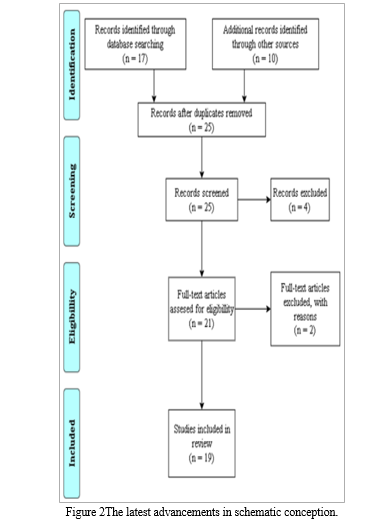
VII. METHODOLOGY
Fake accounts often exist to boost the visibility metrics of other users. Typically, these accounts exhibit a disproportionate following-to-follower ratio, with many following but few followers. Their patterns of likes may appear erratic or non-selective. Common indicators of fake accounts include the lack of a profile picture and unusual usernames.
This section outlines the dataset used for identifying fake accounts, detailing the specific features selected for analysis. Additionally, the section discusses the application of oversampling techniques, which are crucial to address the imbalance between the numbers of real and fake accounts in the dataset.
A. Dataset and Features
The dataset comprises 1002 genuine accounts and 201 fake accounts, meticulously labelled after a thorough manual review covering various countries and industries. Key considerations during this data collection included follower and following counts, number of media posts, frequency of posts, user engagement such as comments, the profile picture presence, and characteristics of usernames.
An illustrative example of a fake profile from the dataset is depicted in Figure. This profile has an unusually high following count of 3949, but a very low follower count of 15, lacks a profile picture, and has not posted any media.
The primary features selected for analysis in the dataset are as follows:
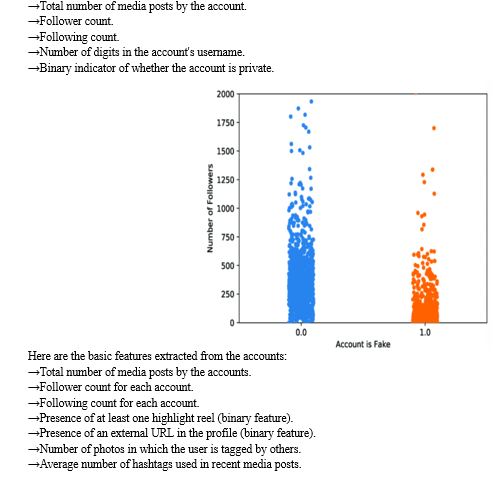
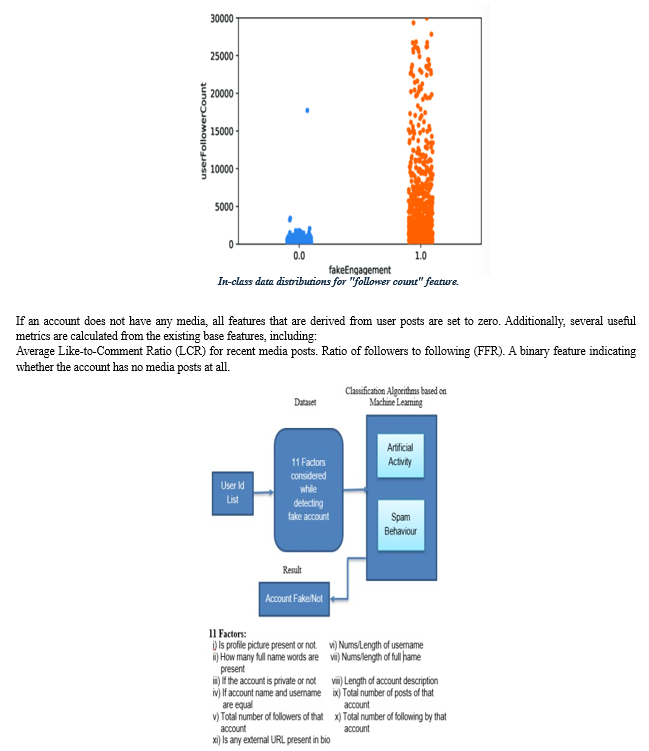
VIII. EXPERIMENTS & ANALYSIS
Through the incorporation of cutting-edge innovations, the suggested method aims to tackle the widespread problem of phoney identities on Instagram as a whole. Obtaining a complete database from Kaggle that includes additionally fictitious and authentic personas is an essential beginning. An Artificial Neural Network (ANN), a potent predictive simulation that can identify subtle trends in the evidence, is trained using a forementioned data set as its basis. The suggested approach heavily relies on feature design, taking into account a wide variety of features such as user behaviour, resource commitment, and personal analytics. After that, the extensive the data frame is used to develop the ANN model, which enables it to discover intricate, chaotic associations and accurately distinguish among authentic and illicit accounts.
The suggested system incorporates a Django portal to improve openness and user interacts. The overall design functions as an easy-to-use platform that allows users to submit Instagram profiles for examination. Viewers are given right away insight regarding how likely it is that a specific account is deceptive, which is a useful tool for spotting fraud in advance. The layout of the app provides patrons with tangible data by going beyond simple spotting and providing perspectives on the factors that influence the system's choice.

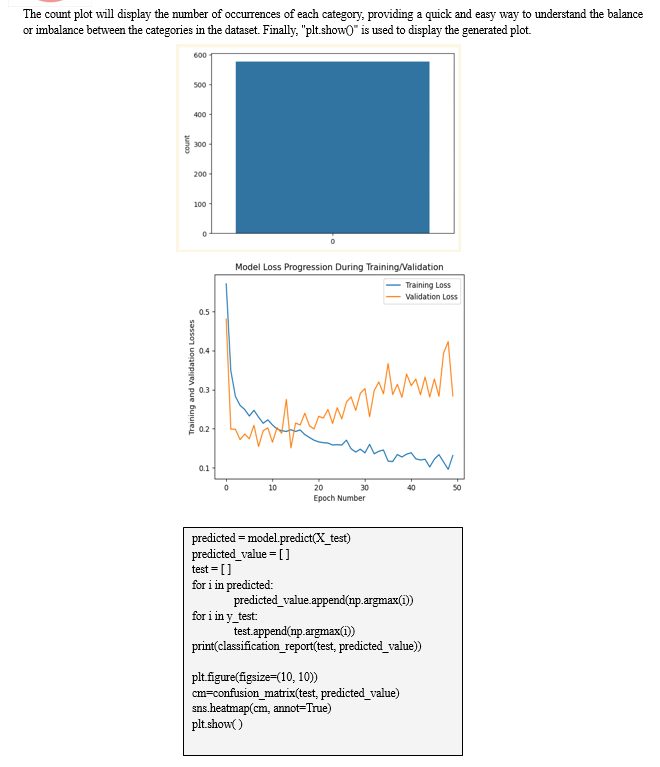
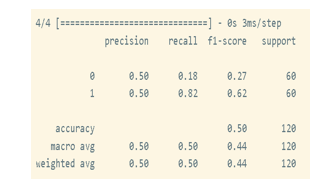
Conclusion
This study tackled the serious issue of phishing accounts on Instagram, which undermine user confidence and the authenticity of the social network. We developed and put into use a cutting-edge technology that uses Artificial Neural Networks (ANNs) to improve and streamline the screening of bogus accounts. Through analysing individuals in great detail and identifying minute trends that point to fraudulent activity, the network seeks to make the internet a more secure and reliable place for every individual. Future advancements and effects from the detection of fake accountancy on social media platforms like Instagram are enormous. The built-in identification mechanism\'s efficacy and range will increase with network integration, promoting a safer online ecology on many media. By using sophisticated feature design approaches, the software is going to be capable to identify ever-more-subtle signs of fraudulent activity, improving its granularity and flexibility in response to changing strategies used by those who create phoney accounts. Investigating plausible AI methods will yield additional information regarding the recognition mechanism\'s process of choice, improving openness and customer trust. Working alongside vendors of platforms to share perspectives, information and recommendations can help to bolster tracking initiatives even more. Combating versus developing challenges will be made possible by instantaneous detection potential, which will guarantee prompt replies to unusual behaviour. Schemes for user knowledge and understanding will enable people to recognise and report phoney accounts, enhancing the automatic identification technology and encouraging a more active and watchful user base. In order to balance the requirement over efficient compliance of safeguards for users confidentiality and the liberty of opinions, legislation and legislative factors must be addressed in order to provide an appropriate atmosphere for the installation and use of detection systems. Accepting these new paths will help make the internet a place where everyone can utilise it safely, reliably, and inclusively.
References
[1] “Social media - Statistics & Facts.” https://www.statista. com/topics/1164/socialnetworks/#dossierKeyfigures [2] “Social Media Definition”. https://www.investopedia. com/terms/s/social-media.asp [3] A. U. Hassan, et al., Sentiment analysis of social networking sites (SNS) data using machinelearning approach for the measurement of depression, in: 2017 International Conference on Information and Communication Technology Convergence (ICTC), Jeju,2017,pp.138140,doi:10.1109/ICTC.2017.8190959 [4] D. Ageyev, et al., Infocommunication Networks Design with Self-Similar Traffic, in: IEEE 15th International Conference on the Experience of Designing and Application of CAD Systems (CADSM), Polyana, Ukraine, 2019,pp.24-27,doi: 10.1109/CADSM.2019.8779314. [5] Z. Hu, et al., Development and Operation Analysis of Spectrum Monitoring Subsystem 2.4–2.5GHz Range, Lecture Notes on Data Engineering and Communications Technologies, 2020, pp. 675–709. doi: 10.1007/978-3-030-43070- 2_29. [6] Akyon, F. C., & Esat Kalfaoglu, M. (2019). Instagram Fake and Automated Account Detection. Proceedings- 2019 Innovations in Intelligent Systems and Applications Conference, ASYU 2019. https://doi.org/10.1109/ASYU48272.2019.8946437 [7] Dey, A., Reddy, H., Dey, M., & Sinha, N. (2019). Detection of Fake Accounts in Instagram Using Machine Learning. International Journal of Computer Science and Information Technology, 11(5), 83–90. https://doi.org/10.5121/ijcsit.2019.11507 [8] Meshram, E. P., Bhambulkar, R., Pokale, P., Kharbikar,K., & Awachat, A. (2021). Automatic Detection of Fake Profile Using Machine Learning on Instagram. International Journal of Scientific Research in Science and Technology, 117– 127.https://doi.org/10.32628/ijsrst218330 [9] Sheikhi, S., 2020. An Efficient Method for Detection of Fake Accounts on the Instagram Platform. Revued Intelligence Artificielle, 34(4), pp.429-436 [10] “Hidden Layer Definition” https://deepai.org/ma-chine-learning-glossary-andterms/hidden-lay-er-machine-learning [11]W. Delu, Enterprise Network Marketing Strategy Based on SNS Social Network, in: 2019 12th International Conference on Intelligent Computation Technology and Automation (ICICTA), Xiangtan, China,2019,pp.295299,doi:10.1109/ICICTA49267.2019.00069. [11] Y. Romanyshyn, et al., Social-communication web technologies in the higher education as means of knowledge transfer, in: IEEE 2019 14th International Scientific and Technical Conference on Computer Sciences and Information Technologies (CSIT), 2019, pp. 35–39. [12] M. Zharikova, V. Sherstjuk, Academic integrity support system for educational institution, in: 2017 IEEE 1st Ukraine Conference on Electrical and Computer Engineering, UKRCON, 2017. [13] A. M. Vegni, V. Loscri, A. Benslimane, SOLVER: A Framework for the Integration of Online Social Networks with Vehicular Social Networks, in: IEEE Network 34(1), 2020,pp.204-213,doi: 10.1109/MNET.001.1900259 [14] M, Mamatha, M.Srinivasa Datta, Umme Hani Ansari, Dr. Subhani Shaik. (2021). Fake Profile Identification using Machine Learning Algorithms. July, 2248-9622
Copyright
Copyright © 2024 Adarsh Chaurasiya, Amrit Verma, Kota Shamitha, Dr. Gaurav Kumar. This is an open access article distributed under the Creative Commons Attribution License, which permits unrestricted use, distribution, and reproduction in any medium, provided the original work is properly cited.

Download Paper
Paper Id : IJRASET60629
Publish Date : 2024-04-19
ISSN : 2321-9653
Publisher Name : IJRASET
DOI Link : Click Here
 Submit Paper Online
Submit Paper Online

